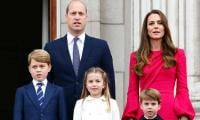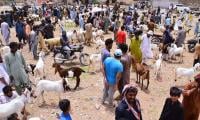Sindh’s chief minister has directed the school education department to shortlist at least 4,000 public schools to provide them with every basic facility within the next six months, for which he approved Rs6 billion.
Syed Murad Ali Shah approved the funds and issued the orders during a meeting with representatives of the school education department at the CM House on Wednesday. Education Secretary Iqbal Durrani said in his presentation to the chief executive that around 4,000 government schools lacked the facility of toilets. But the CM told him that he had listened to enough reports of the same nature.
Shah told Durrani to refrain from repeating things and to focus on the targets being provided to his department. The CM ordered selecting some 4,000 public schools to provide them with compound walls, libraries, teachers’ rooms, laboratories, toilets, potable water, electricity and other necessities.
Around 2,500 schools where power connections cannot be provided should be supplied with solar energy, he added. He then asked the meeting how much the entire project would cost.
When Planning & Development Chairman Mohammad Waseem informed him that Rs6 billion would be required to implement his orders, CM Shah approved the funds and green-lit the project. “I want it to be completed within six months. This is a target that you have to achieve.”
When the chief executive was told that enrolment at government schools was recorded at 4,249,033 in 2012 and it was almost the same in 2016-17, he asked how parents could send their children to schools that lacked basic facilities. “Once 4,000 schools are holistically improved, enrolment would increase automatically.”
According to the statistics provided by the school education secretary to the chief executive, the province has 38,132 primary schools, of which 4,303 are for girls only and 28,520 co-educational; of 2,241 middle schools, 545 are for girls only and 1,377 co-educational; the number of secondary schools is 1,719 while there are 291 higher secondary schools.
CM Shah said that against 38,132 primary schools, the number of middle schools (2,241) was negligible. He directed the education department to increase the number of middle schools by making room at existing primary schools. “But primary schools should be upgraded to middle schools on the basis of need or merit.”
The meeting was told that enrolment at primary schools was 2,735,156, for which 91,092 primary teachers were carrying out their responsibilities. On this the chief executive calculated that there was one teacher for every 30 students.
He noted that the teacher-to-students ratio was not bad but “we have to focus on capacity-building of the teachers”. He then directed Education Minister Jam Mehtab Dahar to rationalise teachers’ transfers and postings.
The chief executive directed the education secretary to develop school-wise data, which should include the numbers of students and teachers, the educational institutions’ budgets, their facilities and their areas.
“I want to develop a system under which school-specific data could be made available so that the problems and issues of educational institutions could be identified immediately for their resolution.”
CM Shah said he wanted to introduce modern primary education across the province, for which the spadework should be initiated so that the changes could be made part of the system from the next session. “Primary education provides foundation. If the foundation is strong, the building would remain strong. Therefore, latest teaching methods should be adopted.”
The chief executive decided that every fortnight he would review the progress on the agenda set in the meeting to develop complete infrastructure of 4,000 schools. The meeting was also attended by Chief Secretary Rizwan Memon, Principal Secretary to CM Sohail Rajput and Finance Secretary Hassan Naqvi among others.
The picture shows a pharmacy. — AFP/FileThe Karachi administration has launched a campaign to check the expiry dates...
In this still, Karachi Mayor Barrister Murtaza Wahab addresses an event on April 25, 2024. — Facebook/Barrister...
In this still, Sindh Inspector General of Police Ghulam Nabi Memon chairs a meeting at the Central Police Office on...
Representational image shows police tape. — AFP/FileAn elderly man who ran a general store was shot and killed in...
A handcuffed suspect stands behind the bars with a policeman standing outside the jail in this undated image. —...
In this still, Sindh Chief Minister Syed Murad Ali Shah meets federal energy minister Owais Ahmad Khan Laghari in...







